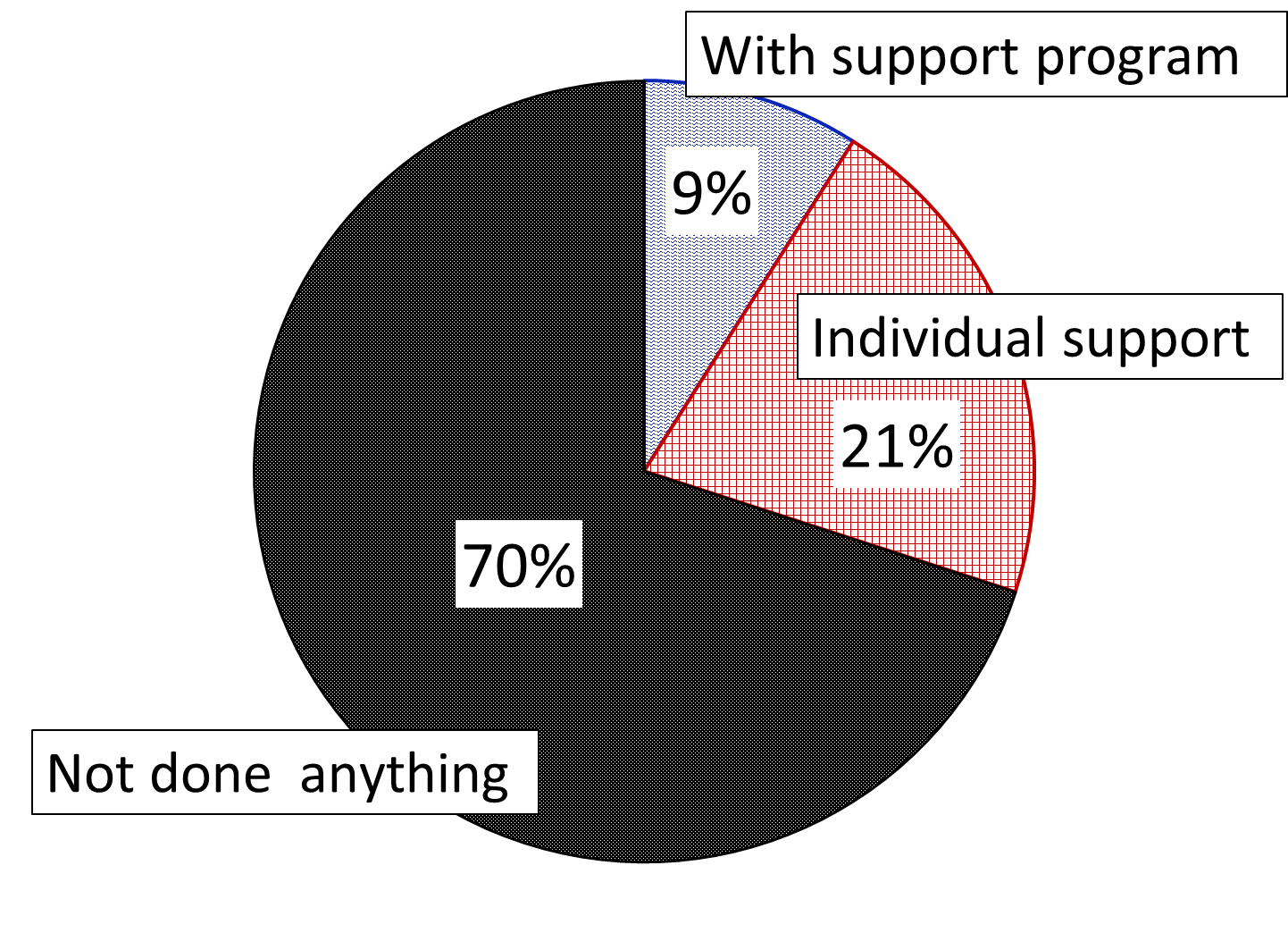Column Finance and the Social Security System 2018.04.17
【Aging, safety net and fiscal crisis in Japan】No.96: Support for Balancing Infertility Treatment and Work
In March 2018, the Ministry of Health, Labor and Welfare released a report titled "Comprehensive survey on various problems related to balancing infertility treatment and work". Of the 1,008,000 births in 2015, 51,001 births (5.1%) were through the use of assisted reproductive technology (in vitro fertilization, micro insemination and frozen egg). In Japan, the percentage of couples who have undergone (or are currently undergoing) infertility examinations and treatments is 18.2%, while the percentage of couples without children is 28.2%
The cause of infertility can rest not only in females but also in males. The Ministry of Health, Labor and Welfare conducted a questionnaire survey on the extent of companies' support for employees undergoing infertility treatment. As shown in Figure 1, 70% companies do not have any program to support employees undergoing infertility treatment, 9% have a program, and 21% do not have a program but address such cases individually. In accordance with these trends 67% of companies do not know if they have employees undergoing infertility treatment.
Companies with a program to support employees undergoing infertility treatment allow a leave of up to one year. As a countermeasure against the declining birthrate, it seems that it is necessary for the government to expand the system that supports balance between infertility treatment and work.

(Source)Ministry of Health, Labor and Welfare
